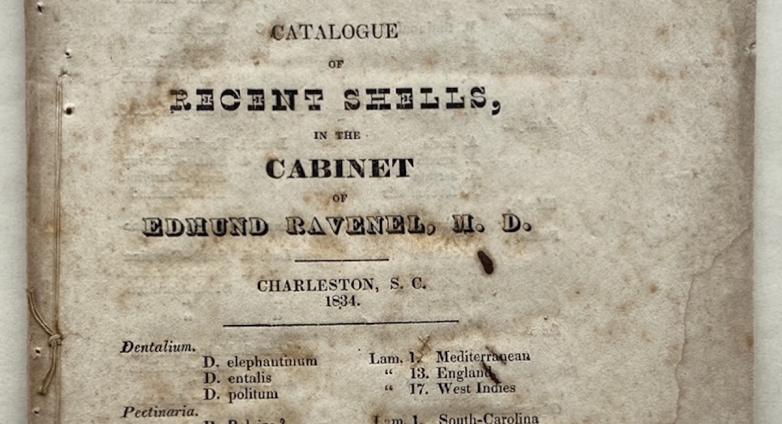A already mentioned, the main body of the sale features a substantial selection from the Richard I. Johnson library on molluscs: including several thousand pamphlets and off-prints, many inscribed by their authors, offered in just over 120 lots.
Included are rare examples of collection catalogues, and regional malacological check-lists. But running in parallel with these important individual works there is the interconnected web of provenances that is revealed by the Johnson collection. These pamphlets and off-prints stand as clear testimony to the co-operation of researchers, institutions, and enthusiasts across continents and across generations.
Johnson gathered together works by or from many of the great malacologists of the past. The marks of their ownership are often evident, and the marks of his ownership have been added. Now the process continues, with this sale the ‘next generation’ is offered a chance to acquire the ‘Richard I. Johnson’ copy.
Off-prints: Today, if a researcher seeks information or wishes to publicize a ‘find’ they can spread the word almost instantaneously via email, online discussion, and then by publication. In the 19th century (and for most of the 20th century) the equivalents were mail, papers read at meetings of scientific societies, and publication of these papers in volumes of ‘proceedings’. The final important option was to have an off-print run off which would feature just the researcher’s report of their find, and be limited by the author’s budget and the probable level of interest in the subject.
These small easily-shipped works could then be dispatched around the world, and, often, were the quickest way for individual researchers to let their peers know of their latest discoveries. A presentation inscription was typically included: a sign of respect, a way of soliciting a response, and a way of ensuring that the recipients reciprocated when their latest discoveries were published.
A number of the off-prints in the present collection show a particular physical sign of this postal traffic: quite a number have been folded vertically before being shipped.
The possible intersections of authors, owners, institutions and journals seen in this collection feel almost infinite. One example, the works (or works from the libraries) of the following are all represented in the sale, and, Kevin-Bacon-like, can all be linked together. T.A. Conrad – G.W. Tryon – L.G. de Koninck – P.H. Fischer - the Agassiz (father and son) – J.C.H. Crosse - W. Clench – P. Barsch - R.I. Johnson.
Throughout the last 200 years or so, these off-prints have retained their importance as they provide a framework through which the taxonomy of molluscs can be understood and advanced. Priority in nomenclature can be established: the Guppy is named after Robert Guppy, who discovered the fish in Trinidad in 1866. It was named Girardinus guppii in his honour by Albert C. L. G. Günther later that year. Over time, the literature showed that fish had previously been described in America so, whilst the common name stuck, Girardinus guppii was relegated to the position of a junior synonym of Poecilia reticulata.

















